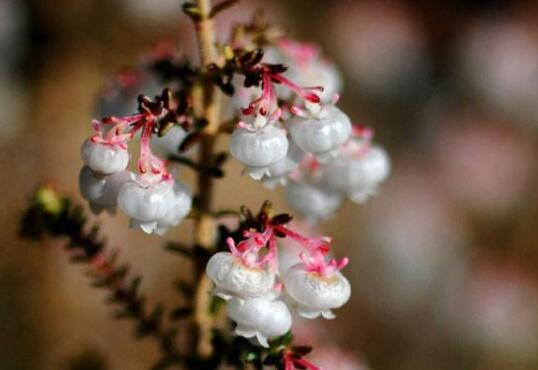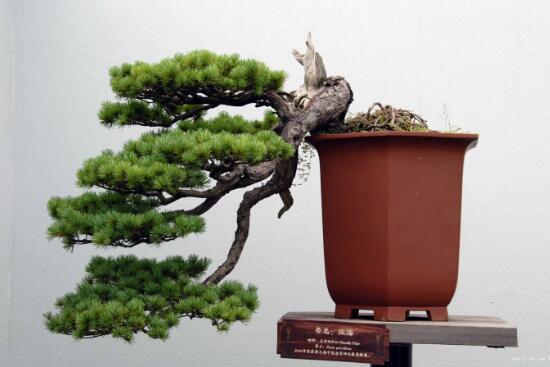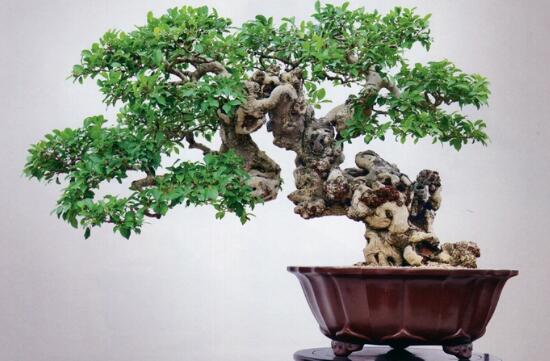How to raise potted heather, breeding methods and precautions / avoid bright light
Photinia is a kind of flower plant native to Africa, which has high ornamental value. Nowadays, it is cultivated in all parts of our country, but there are many places that need to pay attention to if we want to raise it well. About how to raise potted heather? What are the breeding methods and matters needing attention of heather? Next, the editor will take you to learn about it.
First, how to raise potted heather and understand its habits

If we want to know how to raise potted heather, we must first understand its growth habits, which is a kind of plant that likes light, so we should keep enough light when we breed, so it can grow better. In addition, we also need to pay attention to daily water and fertilizer management. Details are below, let's take a look.
2. Culture methods and matters needing attention of Photinia officinalis
1. Humus soil
Before we breed heather, we should first choose soil, which is a step to lay a good foundation, so it is very important. Generally, it is best to choose loose, fertile and slightly acidic humus soil. This kind of soil has good drainage and air permeability, which can make plants better absorb nutrients and is not prone to the phenomenon of stagnant water.
two。 Fertilize, apply thin fertilizer
Fertilizer is one of the main nutrients in the growth process of heather, especially after entering the growing period, its demand for fertilizer is very high, basically every other month, but there is one thing we should pay attention to before fertilization. that is, we must apply thin fertilizer, if the fertilizer concentration is too high, it is easy to burn the plant.
3. Moisture, avoid stagnant water
In the process of raising heather, the frequency of watering should be changed according to the climate. In spring and autumn, because the climate is more suitable, we usually water once every 2-3 days. After entering summer, because the climate is hot and dry, the water will evaporate faster, so we need watering every day, but we don't need too much water, just keep the soil moist, and it's best not to cause stagnant water. otherwise, it is easy to cause the root to rot.
4. Light, avoid strong light
Photinia is a kind of light-loving plant, but it is not tolerant to strong light. If the care is not too strong in spring and autumn, we can put it outside to receive light all day. After entering the summer, because of the strong light, we need to move it to the indoor semi-shade for breeding, so as not to sunburn the plants and cause the leaves to dry and yellowing.
5. Prevention and control of diseases and insect pests should be timely.
In the process of raising heather, if we are not careful enough, it is easy to let diseases and insect pests enter while we are not careful. this kind of problem is very harmful to the plant. if we must deal with it in time when we find it, the specific treatment methods are introduced in detail in the article on the prevention and control of diseases and insect pests.
Culture methods and matters needing attention of Photinia auriculata
Latin name Erica
The plant kingdom.
Phylum angiosperm
Dicotyledonous class
Order rhododendron
Family Rhododendron
France of origin
Flower talk lonely betrayal, happy love
The color is white, peach red and purple
Heather (scientific name: Erica) refers to the plant of the genus Photinia of the rhododendron family. There are about 700 species of heather in the world, most of which are from South Africa and are called "queens endemic to South Africa". In addition, more than 70 species are distributed in other parts of Africa, the Mediterranean and Europe. Heather is also the birthflower of December 6. The "Erica canaliculata" shown in the picture has the title of "snake eye heather" in Japan because it looks like the famous Japanese pattern "Snake eyes" (common in home patterns, umbrellas, etc.).
1. Morphological characteristics.
Photinia is a shrub plant with slender leaves and evergreen plants with a height of about 20-150 cm.
It varies, but some varieties, such as E. arborea and E. scoparia, can reach a height of 6-7 m. The most extant community of heather is the most famous in Luenburg heather grassland, a nature reserve in northern Germany.
2. Growth habits
Like sufficient light, cold-resistant, acid-loving, loose, humus-rich soil.
Erica heather photo guide: how to raise heather / how to reproduce heather business card Erica alias: Scottish heather classification: shrub flower family: plant class dicotyledonous class rhododendron rhododendron genus flowering: spring heather (scientific name: Erica) refers to the rhododendron family Europe heather plants. There are about 700 species of heather in the world, most of which are from South Africa and are called "queens endemic to South Africa". In addition, more than 70 species are distributed in other parts of Africa, the Mediterranean and Europe. Heather is also the birthflower of December 6. Introduction of heather culture methods and matters needing attention Photinia (scientific name: Erica) refers to the plant of the genus Photinia of the rhododendron family. There are about 700 species of heather in the world, most of which are from South Africa and are called "queens endemic to South Africa". In addition, more than 70 species are distributed in other parts of Africa, the Mediterranean and Europe. Heather is also the birthflower of December 6. The morphological characteristics of Photinia are shrubs with slender leaves and evergreen plants with a height of about 20-150cm, but some species such as Photinia and E. scoparia can reach a height of 6-7m. Many branches, leaves often 4 whorls, smooth, needle-shaped, flowers small, red, often pendulous, bell-shaped. The colors of heather are white, pink and purple. The flowering period of Photinia officinalis in spring. The ecological habits of heather are abundant light, cold-resistant, acid-loving, loose and humus-rich soil. The cultivation technique of Photinia is different from other kinds of potted plants, it needs quite a long cultivation period. Photinia should be cultivated from January to March and cut into a basin with a diameter of 5 to 8 cm and filled with clay from June to July. From November to March of the following year, move the cuttings to a basin of 11 centimeters in diameter. In the winter of the first to second year of cultivation, heather plants should be stored in a greenhouse of 3 degrees Celsius. In the following spring, when the weather warms up and the heather enters its developmental stage, it is ready to put it outdoors. At that time, Photinia plants will go through three growth periods outdoors. These three growth periods can be delineated by accumulated temperature: the first stage outdoors is the general growth period, requiring a total accumulated temperature of 810C; the second stage is the growing period, where the accumulated temperature required by plants reaches 1210 degrees Celsius; the third stage is the flowering stage, usually at the end of September, the accumulated temperature reached 1770 degrees Celsius. Since they grow in northern Germany, the above total accumulated temperature is calculated based on the climate of northern Germany. The time for the cultivation of heather plants in other countries and moving to outdoor nurseries can be slightly earlier or later, depending on the local geographical location. The cultivation of Photinia plants also needs to consider the content of nitrogen in the soil, which ranges from 6 to 1800 mg per plant. Another traditional practical technique for cultivating Photinia plants is to move potted seedlings to outdoor nurseries in the second spring, rather than putting heather plants cultivated in pots outdoors. It should be noted that the plants of Photinia should be transplanted to the nursery with a slope of 2% to ensure that the excess water is discharged and then covered with polyethylene and polypropylene film. The disease control of Photinia officinalis the main symptoms of root rot occur in the root and begin to occur at the root tip. At the initial stage, the root tip became yellowish brown, gradually changed to dark brown, the outer layer rotted off, and the disease spread upward to part of the root system, making it black-brown rot. In severe cases, all the roots rot, and the aboveground branches and leaves wilt and wither. The cause of disease is fungal disease. The pathogen survives in the culture medium, spreads with the water and infects from the root tip. Diseases are easy to occur in the matrix, such as long-term water content, poor drainage, closed environment and so on. Photinia has strict requirements on water quality, high salinity and pH will lead to plant growth decline, resulting in diseases. The bacteria in the matrix is the main factor for the serious disease. The control method ⑴ cultivation substrate should be strictly disinfected, and the soil disinfectant fumigation substrate should be selected and used after several days of film mulching. In the early stage of ⑵, the substrate and container should be changed in time, and the plant should be soaked in chlorothalonil for 2-3 minutes before planting. ⑶ regularly poured 1000 times of pentachloronitrobenzene fungicide into the matrix. The distribution area of heather originated from southern Africa, northern Europe and the Mediterranean region. The most extant community of heather is the most famous in Luenburg heather grassland, a nature reserve in northern Germany. The medical information and health food therapy information of the Dietotherapy or Medicinal value Huanhua Network are for reference only, and can not be used as the basis for diagnosis and medical treatment. Any health problems should consult professional health care personnel, the treatment of any disease, please follow the doctor's advice. The ultimate task of protecting flowers: to love yourself, proceed from reality and follow the doctor's advice. For disease, do not be careless, do not postpone, do not give up hope, face it bravely, warm the silent world with love, and protect the inner flower field with your heart. The nectar of the pink flower originally from northern Europe can make the bees have a good meal, some slightly acidic substances in the nectar can reduce fatigue, and the essence in its roots is a good product for beauty and beautification. Its unique pure natural ingredients can effectively relieve skin fatigue, regulate microcirculation, enhance the skin's own resistance, and play an important role in alleviating the red blood phenomenon of the skin, making the skin healthy and white. Maintain the function of the dissolving tract, help to urinate smoothly and adjust the physiological function. The honey collected by attracting honey with heather is honey with high nutritional value. Used for soaking and bathing can relieve fatigue and prolong life. The small pink flowers are like stars in the sky, and their fragrance is very pleasant, which is a great enjoyment when taking a bath. Can diuresis and promote intestinal peristalsis, so it can help digestion, help smooth urination, accelerate the removal of waste substances in the body, beauty and other effects. Because it contains arbutin A, it also has antibacterial function to the urinary system. Because it is rich in minerals, in the first century AD, the famous Greek physician Galen used heather to urinate smoothly to purify the body. Soaking and bathing with heather water can relieve fatigue and relieve diseases such as arthritis and rheumatism. European heather is as small as pink flowers in the sky, very fragrant and pleasant, and it is a great enjoyment when taking a bath. The honey collected from honey is attracted by heather, which has high nutritional value. Dietary value adjust Photinia (about 6-8), hot water (about 400cc), honey or sugar (for use) put Photinia into the soup, add hot water, soak for 3-5 minutes, add honey or sugar and drink. Best match with rose, German chamomile, lemon grass, vervain, raspberry leaf, mint leaf, Bodhi, juniper, cumin. The functional Photinia has the effect of diuresis and sterilization, especially for urethral infection. The tiny pink stamens are used to make tea, and the slightly sour taste can reduce fatigue, raise beauty, maintain digestive tract function, help urinate smoothly and adjust physiological function. It is rich in minerals, has convergence, diuresis, sterilization, sedative effect, and can treat nephrotic urethral infection, immersion bath can relieve fatigue, prolong life, but also relieve rheumatism and eliminate facial acne. Brew a teaspoon of dried petals, soak them in a cup of boiling water and simmer for about 10 minutes. Drink with brown sugar or honey. Although they are so similar that they are often confused by people, they are not the same genus. The biggest difference between heather and heather is that its calyx lobes cover the petals, while the petals of heather cover the sepals (the sepals are the outermost layer of the bud and protect the bud). Photinia is a perennial evergreen shrub. It is very short, sometimes only a few centimeters tall, and can grow to nearly 1 meter in shaded places. Photinia mandshurica is the main vegetation in some desolate parts of Europe because of its cold resistance and tenacious survival. In the past, broom heather has many uses, people use its branches to make brooms, brushes, blue baskets and even build roofs and so on. Its twigs, leaves and seeds are the main food for many birds. The flowers of Photinia are rich in nectar and can be used as a good drink. In 2014, Photinia mandshurica was widely planted and bred as an ornamental flower. The scientific name Calluna comes from Greek, meaning "sweep", which refers to the plant used to make brooms, so it has been translated into Chinese. There are two titles for heather in English: "Heath" and "Heather", in which "Heather" actually refers to broom heather. Broom heather is the national flower of Norway, and it is also an important symbol reminiscent of Scotland. Ou Heather the national flower of Norway's national flower-broom heather, commonly known as Scottish heather, has a beautiful translation name-Erica. Flower talk is loneliness and betrayal. It is not afraid of cold cold zone shrub, azaleaceae. In order to adapt to the environment, its leaves have evolved into thin and small, flowers are surprisingly small, each flower is bell-shaped, less than half a centimeter in diameter, exquisite. Snow and ice in northern Europe, leaves, small heather, small body, stubbornly growing in the frozen wilderness, covered with mountains, never withered, in the haggard polar ice sheet, bring warm food for reindeer in the cold winter. Brave, selfless, white, peach and purple flowers bloom in the snow to decorate the ice sheet with spring. The flower language of ou Shinan is lonely, happy love. The flower language of ou Shinan is loneliness. Overlooking the wilderness of heather in Scotland, you can experience the solitude of heather. In Bronte's novel Wuthering Heights, the lonely protagonist Sinclave is buried in a wilderness full of heather. Mark pace in Shakespeare also heard the prophecy of the witch in the wilderness covered with heather. Ou Heather, lonely flower. Ou Heather pictures
- Prev

How to water and fertilize bonsai: how to fertilize banyan bonsai and how often banyan trees are fertilized
A flower in a crop is dominated by fertilizer. Although the banyan tree is not beautiful to blossom, it grows rapidly and needs sufficient nutrients. However, fertilization, like watering, is a technical activity, and the choice of fertilizer, the number and amount of fertilization should be well controlled. So, how to fertilize the banyan bonsai? How often do banyan trees fertilize?
- Next

What is the root of the banyan tree, how to cultivate the root of the banyan tree?/3 recruit to cultivate the perfect root of the banyan tree
The beauty of banyan bonsai lies in its unusually developed roots and its leafy upper body. It is placed indoors or cultured in the open air, which is very ornamental. Life, often hear someone say banyan air roots raised will be very good-looking, then what is banyan air roots? How to cultivate the roots of fig trees
Related
- Fuxing push coffee new agricultural production and marketing class: lack of small-scale processing plants
- Jujube rice field leisure farm deep ploughing Yilan for five years to create a space for organic food and play
- Nongyu Farm-A trial of organic papaya for brave women with advanced technology
- Four points for attention in the prevention and control of diseases and insect pests of edible fungi
- How to add nutrient solution to Edible Fungi
- Is there any good way to control edible fungus mites?
- Open Inoculation Technology of Edible Fungi
- Is there any clever way to use fertilizer for edible fungus in winter?
- What agents are used to kill the pathogens of edible fungi in the mushroom shed?
- Rapid drying of Edible Fungi

